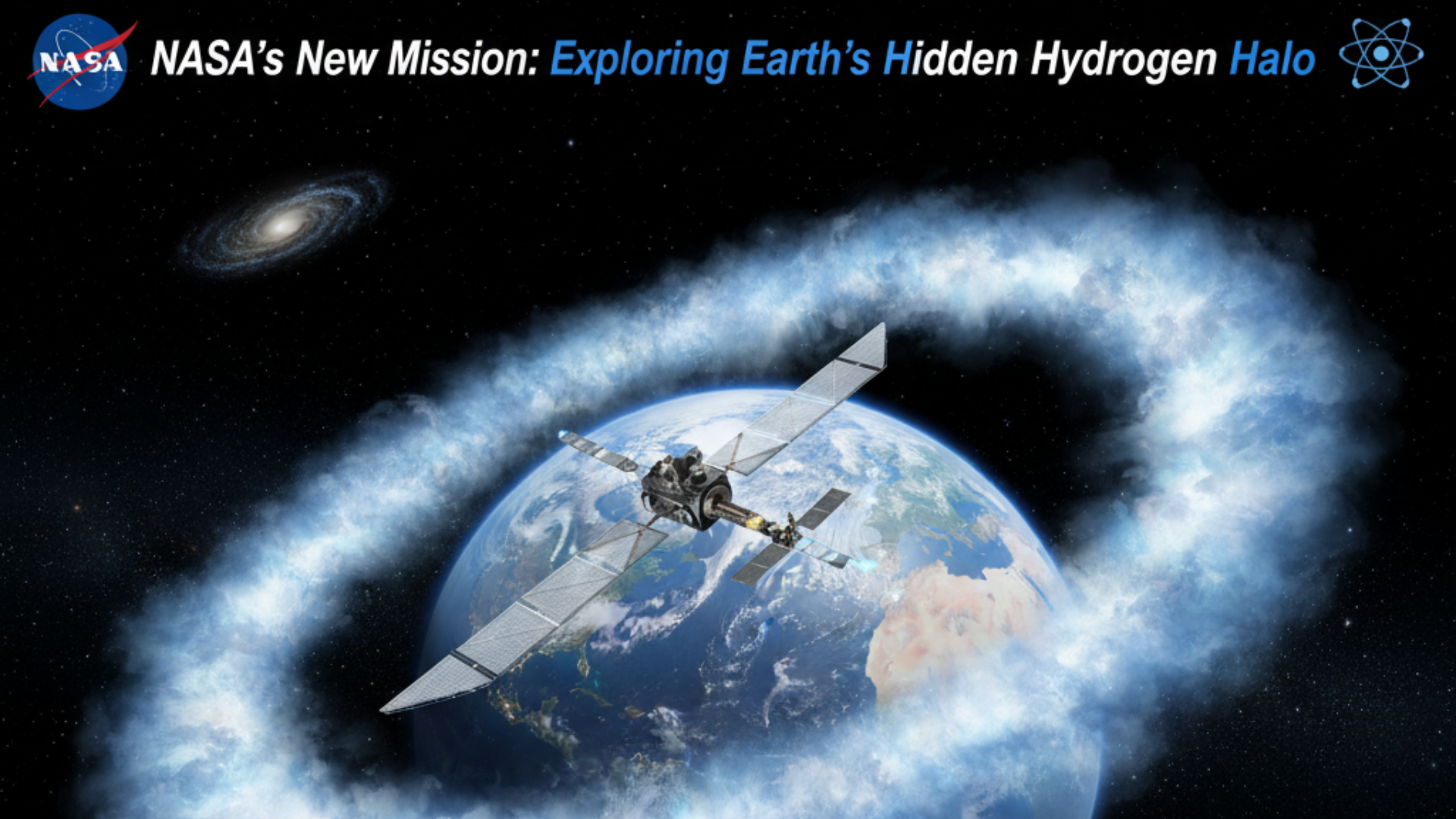Did you know our Earth has a very thin, invisible halo made of hydrogen gas? NASA is getting ready to training it closely with a brand-new space mission called the Carruthers Geocorona Observatory. This special mission is planned to launch in September 2025.
The observatory will use cameras to look at a faint purple glow made by hydrogen atoms high above Earth. Even though this halo is hard to see, it is super significant for science, satellites, and even for knowledge how planets like ours lose water into space.
What is the Geocorona?
The geocorona is a huge, thin layer of hydrogen gases that surroundings Earth.
- It starts about 300 miles (480 km) above our planet.
- It may even stretch almost halfway to the moon!
- The hydrogen there reflects sunlight and gives off a very faint ultraviolet light.
This glow was first seen in pictures taken during the Apollo 16 mission many years ago. Scientists want to learn how this hydrogen reacts with the Sun’s radiation and particles. Why? Because this affects how satellites work and how Earth’s atmosphere is different from other planets like Mars.
It also gives us clues about how planets lose water and helps experts search for other planets in space where life might exist.
The Mission Plan
The new spacecraft is named after George Carruthers, a famous astrophysicist who studied space.
- The spacecraft will consider about 240 kilograms (that’s as heavy as a small car!).
- It will have two ultraviolet cameras:
- A wide-field camera to take big pictures of the geocorona.
- A near-field sensor to capture close-up details.
The spacecraft will ride on a Falcon 9 rocket along with other assignments, like NASA’s IMAP and NOAA’s SWFO-L1.
It will travel to a special spot in space called the Sun-Earth Lagrange Point 1 (L1), which is about 1 million miles away from Earth. After traveling for four months, the spacecraft will begin its main science work in early 2026.
Why This Mission Matters
This mission will:
- Help protect satellites by showing how the Sun affects Earth’s halo.
- Teach us how Earth holds on to its air compared to Mars.
- Give scientists significant clues in the search for life on other planets.
So, the Carruthers Mission is not just about studying Earth—it’s about understanding the universe better!



